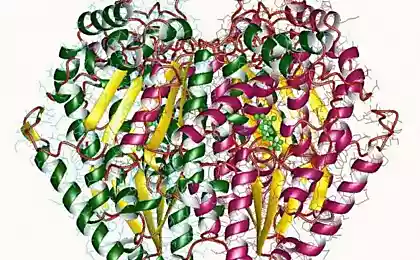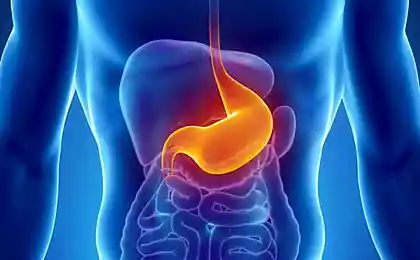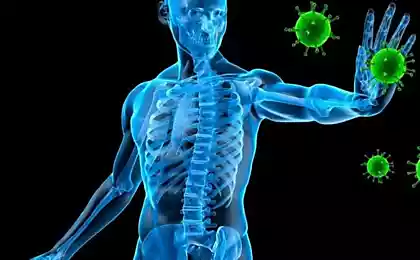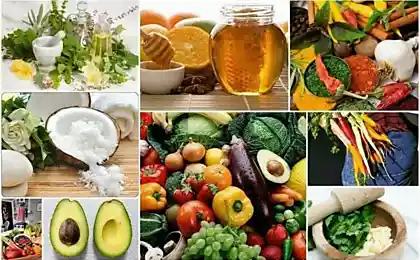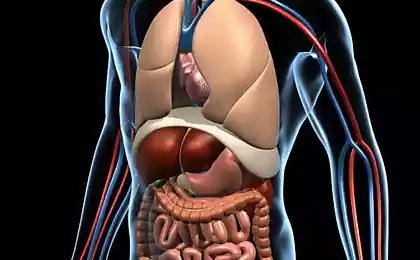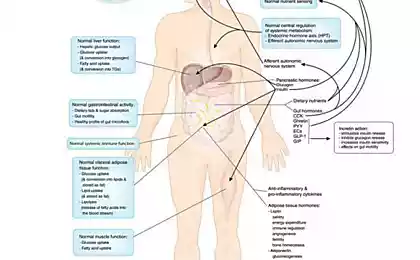172
What are enzymes for? Secrets of the biological catalysts of life

Health ecology. Enzymes are chemical compounds that make living organisms possible. Without them, life on our planet would be impossible. These amazing biocatalysts accelerate biochemical reactions billions of times, ensuring the normal functioning of all body systems, from digestion to cellular respiration.
What are enzymes and how do they work?
Enzymes are biological catalysts of protein nature, which significantly accelerate biochemical reactions without being consumed. There are more than 3,000 different enzymes in the human body, each of which has its own unique function. Enzymes make possible almost all life processes – from the simple breakdown of food to the most complex processes of synthesis of DNA and RNA.
The principle of operation of enzymes is surprisingly accurate. Each enzyme has a unique active center, which perfectly corresponds to a specific substrate (substance to which the action of the enzyme is directed) on the principle of "key-lock". At the same time, the activity of enzymes is strictly regulated by the body, which ensures the coordinated operation of all biochemical processes.
History of enzyme study
The history of the study of enzymes began in 1833, when the French chemists Anselm Payen and Jean-François Persault isolated the first enzyme from malt - amylase. The term "enzyme" comes from the Latin word "fermentum", which means "starter". Later, in 1878, the German physiologist Wilhelm Kühne proposed the term enzyme (from the Greek en zyme - "in yeast"), which is also used to refer to enzymes.
In 1926, American biochemist James Sumner first isolated and crystallized the enzyme urease, proving its protein nature. For this discovery he was awarded the Nobel Prize in Chemistry in 1946. Since then, the study of enzymes has become one of the key areas in biochemistry and molecular biology.
Enzyme classification
In modern biochemistry, an international classification of enzymes is adopted, subdividing them into six main classes depending on the type of catalyzed reactions:
- Oxydoreductase catalyze redox reactions
- Transfers catalyze the transfer of functional groups between molecules
- Hydrolases catalyze hydrolysis reactions (splitting involving water)
- liazy catalyze the break of bonds without hydrolysis
- isomerase catalyze structural or geometric changes in molecules
- Ligas catalyze the combination of two molecules to form new chemical bonds
The role of enzymes in the human body
The role of enzymes in the human body is difficult to overestimate. They are involved in all vital processes:

Digestive system
Digestive enzymes are perhaps the most famous enzymes. They are produced by the salivary glands, stomach, pancreas and small intestine. Amylase contained in saliva begins to break down starch in the mouth. In the stomach, pepsin breaks down proteins. In the small intestine, pancreatic enzymes complete the breakdown of all food components – proteins, fats and carbohydrates – into simple molecules that can be absorbed into the blood.
Signs of deficiency of digestive enzymes
- Feeling heavi after eating
- Bloating and increased gas formation
- Heartburn and belching
- Stool disorders (diarrhea or constipation)
- Undigested food particles in the stool
- Feeling of rapid saturation
- Pain or discomfort in the stomach
Metabolism and Energy Exchange
Enzymes play a key role in metabolism – the aggregate of all chemical reactions in the body. They are involved in the Krebs cycle, glycolysis, beta-oxidation of fatty acids and other metabolic pathways, providing cells with energy in the form of ATP. Without enzymes, these reactions would be too slow to sustain life.
If there were no enzymes in our body, the process of digesting a regular meal would take about 50 years instead of a few hours.
Detoxification and protective functions
The liver contains many enzymes involved in the detoxification of harmful substances. For example, cytochrome P450 neutralizes toxins and drugs. Catalase and superoxide dismutase protect cells from oxidative stress by neutralizing free radicals. These antioxidant enzymes are the body’s most important line of defense.
Synthesis of DNA, RNA and proteins
Enzymes provide DNA replication (DNA polymerase), transcription (RNA polymerase) and translation (aminoacyl-tRNA synthetase). Without them, it would be impossible to reproduce genetic information and synthesize proteins – the basis of life.
Factors Affecting Enzyme Activity
The activity of enzymes depends on many factors that can both increase and reduce their efficiency:
Key factors affecting the activity of enzymes:
- Temperature. For each enzyme there is an optimal temperature at which its activity is maximum. For enzymes in the human body, this is usually 37°C (normal body temperature).
- pH Each enzyme has an optimal pH range. For example, gastric pepsin is active in an acidic environment (pH 1.5-3.5) and pancreatic enzymes in an alkaline environment (pH 7.5-8.5).
- Substrate concentration The rate of enzymatic reaction increases with an increase in the concentration of the substrate to a certain limit.
- Presence of activators and inhibitors Some substances can increase or decrease the activity of enzymes.
- Hydration A sufficient amount of water is necessary for the normal functioning of enzymes.

Enzymes in nutrition and food industry
Enzymes are widely used in the food industry. They are used in the production of cheese (rennine), beer (amylase and protease), bakery products (amylase), juices (pectinases) and many other products. The fermentation processes that underlie the production of wine, beer, dairy products are also provided by enzymatic activity.
In terms of a healthy diet, it is important to understand that heat treatment destroys the natural enzymes found in raw foods. Therefore, the inclusion in the diet of fresh fruits, vegetables, germinated grains and nuts can contribute to the enrichment of the body with natural enzymes.
Foods rich in natural enzymes:
- pineapple - contains bromelain, which breaks down proteins
- papaya Contains papain that improves digestion
- kiwi - contains actinidine, which contributes to the breakdown of proteins
- avocado Contains lipase that breaks down fats
- banana - contains amylase and maltase for the breakdown of carbohydrates
- honey - contains amylase, diastase and invertase
- Sauerkraut and fermented foods rich in various enzymes due to the fermentation process
- Seed sprouts contain many active enzymes necessary for germination
Fermentotherapy: treatment with enzyme drugs
Enzyme preparations are widely used in medicine to treat various diseases. The most common pancreatic enzymes that are used for pancreatitis, cystic fibrosis and other conditions accompanied by insufficiency of pancreatic function. They help compensate for the deficiency of their own digestive enzymes and improve the absorption of nutrients.
It is important to remember!
Enzyme preparations should be prescribed by a doctor. Self-medication can lead to the suppression of the production of its own enzymes and the formation of dependence on drugs. Before starting any enzyme supplements, be sure to consult a gastroenterologist.
Systemic enzyme therapy is a direction that uses combinations of proteolytic (clearing proteins) enzymes to treat inflammatory diseases, injuries, and impaired immunity. Drugs such as Wobenzyme contain a complex of plant and animal enzymes, which, entering the bloodstream, have anti-inflammatory, immunomodulatory and antithrombotic effects.
How to Maintain Healthy Enzymatic Activity
Practical recommendations for maintaining healthy enzyme activity:
- Fully chew your food. The digestive process begins in the mouth, where salivary amylase begins to break down carbohydrates.
- Eat raw fruits and vegetables They contain natural enzymes that help them digest.
- Include fermented foods in your diet - Yogurt, kefir, sauerkraut, kombucha, kimchi.
- Maintain a healthy gut microflora Good bacteria help in the production of certain enzymes.
- Avoid overeating. This puts an excessive burden on digestive enzymes.
- Manage stress. Chronic stress negatively affects the production of digestive enzymes.
- Limit your alcohol use - it can disrupt the activity of enzymes of the pancreas and liver.
- Maintain water balance A sufficient amount of water is necessary for the normal functioning of enzymes.
- Regularly engage in physical activity This improves the metabolism and functioning of the digestive system as a whole.
The future of fermentology: promising directions
Modern science is actively exploring the potential of enzymes to solve various problems of medicine and biotechnology. Among the promising areas are the creation of artificial enzymes with specified properties, the use of enzymes for bioremediation (cleaning the environment from pollution), the development of enzyme biosensors for the diagnosis of diseases.
Of particular interest is the use of enzymes in oncology. Some enzymes are able to recognize and destroy cancer cells or activate anti-tumor drugs directly in the tumor, which reduces the toxic effects of chemotherapy on healthy tissue.
The study of enzymes opens up new horizons in understanding the mechanisms of life and developing treatments for various diseases. Perhaps enzymes will be the key to solving many of the problems of modern medicine.
Conclusion
Enzymes are amazing biomolecules without which life as we know it would be impossible. They ensure the normal course of all biochemical processes in the body, from digestion to DNA synthesis. Understanding the role of enzymes and the factors that influence their activity allows us to approach health and nutrition more consciously.
The inclusion in the diet of foods rich in natural enzymes, proper organization of nutrition, a healthy lifestyle - all this contributes to maintaining the optimal activity of the enzymatic systems of the body. In cases of enzyme deficiency, modern medicine offers effective methods of enzyme therapy, which, however, should be used under the supervision of a specialist.
Taking care of the health of your own enzymatic systems is an investment in longevity and quality of life, which will surely bear fruit in the form of well-being, energy and no digestive problems.
Glossary of terms
Enzyme (enzyme)
Biological catalyst of protein nature, which accelerates chemical reactions in the body without being consumed.
substrate
A substance that undergoes transformation under the action of an enzyme.
Active centre
The area of the enzyme molecule directly interacting with the substrate and providing catalysis.
Coenzymes
Non-protein components necessary for the functioning of certain enzymes.
Enzyme inhibitors
Substances that reduce or completely block the activity of enzymes.
Enzyme activators
Substances that increase the activity of enzymes.
pepsin
Digestive enzyme produced in the stomach and breaks down proteins into peptides.
amilaza
An enzyme that breaks down starch and glycogen into simple sugars.
lipaza
An enzyme that breaks down fats (triglycerides) to glycerol and fatty acids.
Protease
An enzyme that breaks down proteins into smaller peptides and amino acids.
Enzymopathy
A disease caused by a violation of the activity of certain enzymes in the body.
Fermentotherapy
A method of treatment using enzyme drugs.
